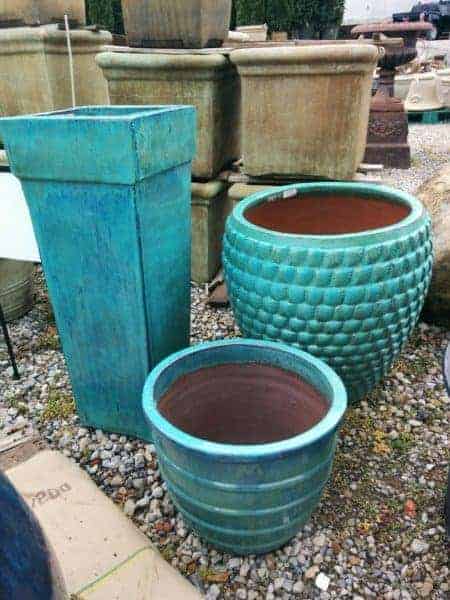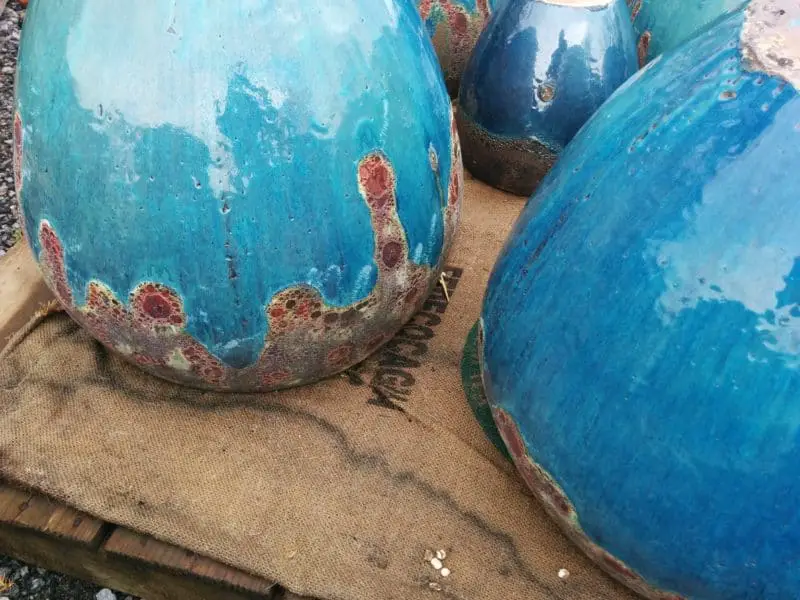People are always asking me how to prevent their pots from cracking. They have found the perfect pots, but do not want to keep buying them, over and over and over again. The primary cause of cracking in your pots is freezing water.

To prevent plant pots from cracking they need to be dry when the temperatures fall below freezing for more than 24-48 hours. The expansion of the water, being held in the pores in the pot, and in the potting soil during freezing causes the cracking.
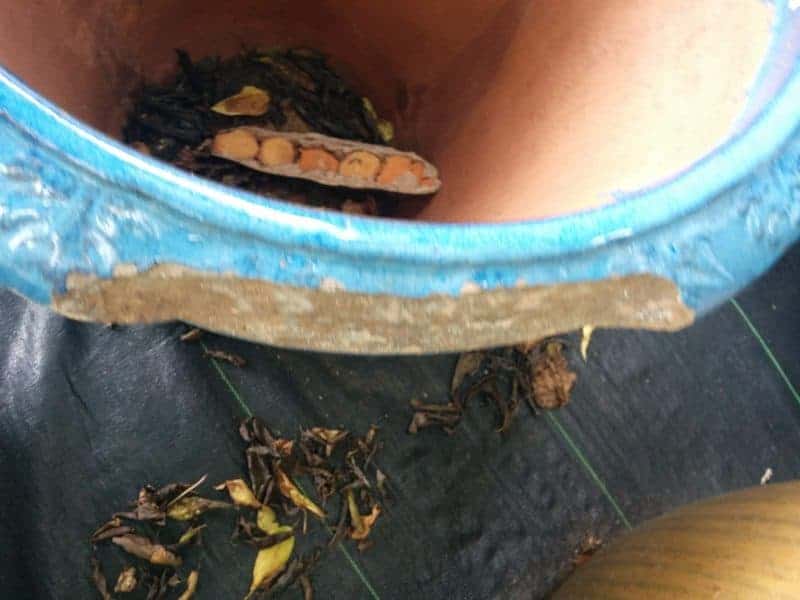
The climate you live in, and what your pot is made from, will determine how your pots will fare in freezing weather. A good way to prevent drainage holes from getting clogged is to use pot feet. Find out how easy they are here in ” #1 Secret to Protecting Your Deck & Surfaces From Plant Pots”
Zones 1-4
Pots can not withstand the pressures of water freezing within the pot. Freezing water expands outward. When a pot has soggy wet soil or has water pooling up inside from a clogged drainage hole, both will hold enough water for you to come outside one morning and find your pot cracked wide open and lying in pieces on the ground.

These are forces of nature that formed the planet and brought the mountains down, your pottery doesn’t stand a chance.
To prevent your pottery in zones 4 and colder from cracking, empty the pots and cover to keep absolutely dry for the entire winter. I like to turn them upside-down and store them in a dry storage shed.
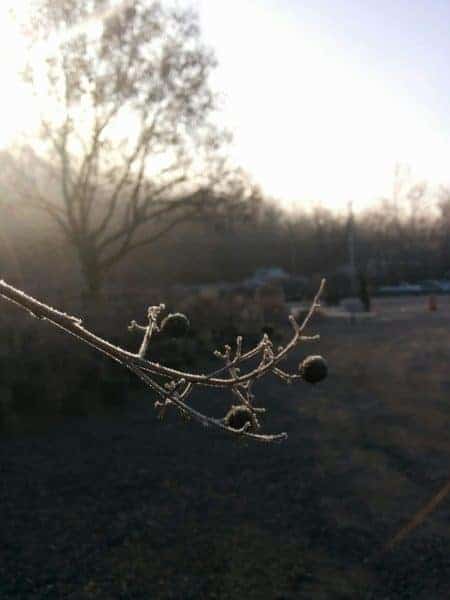
Zones 5-6
Zones 5 & 6 are just getting mild enough that plants can withstand spending the winter in pots.
The trunk and stem of zone 6, and colder, plants are more cold hardy than the roots; adapted to withstand temperatures well below freezing. The roots of these plants are only adapted to withstand temperatures down to 32 deg F.
When water falls in temperature, it does so steadily until 32 deg F. Freezing releases heat, so as long as the water is going through the chemical change from liquid to a solid, freezing, it will stay at 32 deg F. It stays at that temperature until all the water is frozen and only then the temperature can continue to drop.
This is why plant roots can freeze in the ground and survive, and not in a pot. The ground does not finish freezing, there is always more ground to freeze. Permafrost areas are a whole other ballgame entirely.
In a pot, above ground, the entire potting soil can freeze, and then continue to lower in temperature as the surrounding air gets down to 25 deg F, 20 degrees F, 10 deg F, -20 degrees F… as cold as the air temperature drops.
This also explains why larger pottery withstands the cold better than smaller pots, it takes longer to freeze before it can start to dip below freezing, and takes longer for the water within to freeze completely to push out to break the pot.
Zones 7
Zone 7 can still have a few singular nights below freezing. Frost-resistant pots will winter those short periods of freezing just fine. However, with small pots, pots with clogged drainage holes, and self-watering pots, you do need to be concerned that overnight freezes will burst those pots.
Zone 8 and warmer.
It is rare that there are below-freezing temperatures here, so you can keep your pots out. If freezing temperatures do appear, bring your pots inside for the night. You lucky folks, you!
Related Questions:
What is the difference between frost-resistant pottery, glazed pottery, and terra cotta pottery?

Glazed pottery and terra cotta both have open pores that will absorb water. While frost-resistant pottery does not.
This is what you are seeing in terra cotta pottery when the pots are darker in color shortly after watering. This is also why traditional terra cotta pottery gets the green haze and sometimes even mossy growth on them. Terra cotta is unglazed and very porous, it can not be left in temperatures that dip below freezing. The pot will just lose integrity and crumble slowly as the water-filled pores burst when the tiny portions of water freeze. This water, in the pores, will freeze and expand, which causes the pottery to flake and have tiny cracks.
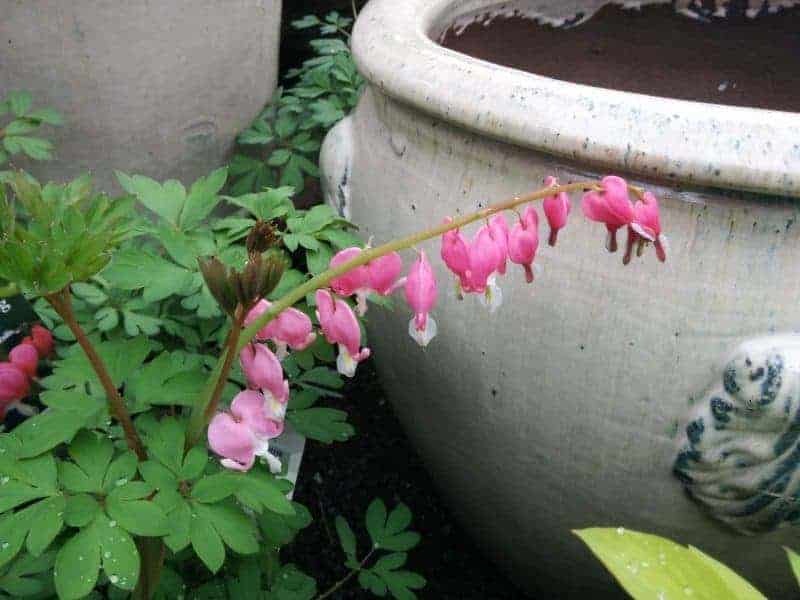
Glazed pottery has colorful non-porous coatings on the outside but still has pores open to absorb moisture, from the potting soil, making it susceptible to freeze cracking.
Frost-resistant pottery does not absorb moisture. It comes with many different finishes including matte, glazed, and other decorative finishes.
Frost-resistant pottery has a different firing process that closes the pottery’s pores so that it does not absorb water. This makes it so the pottery can be outside when the temperature dips below freezing and not flake and crack.
Plastic pots will break if the drainage holes get stopped up and hold water that freezes inside. This will happen the quickest of all the pots as plastic can become very brittle with cold and with age.
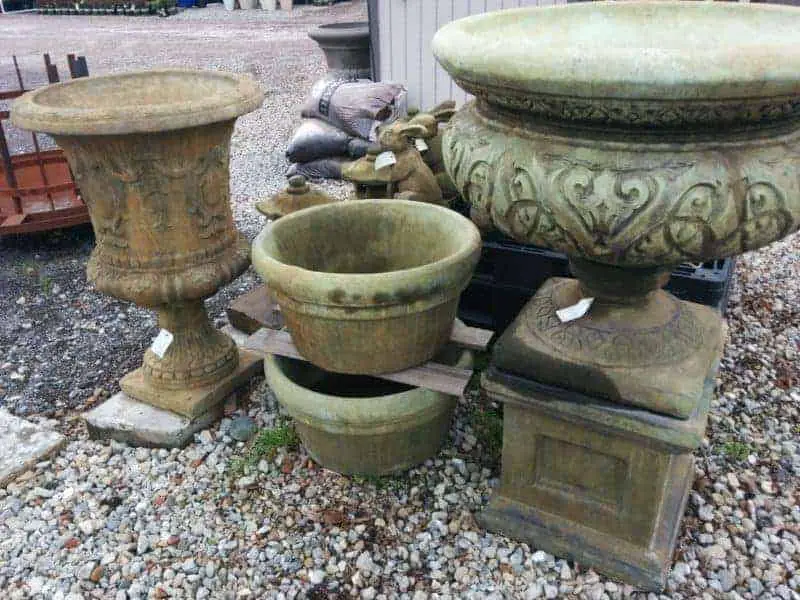
Concrete pots are very resilient to cracking as it is not porous. It is stronger than pottery and can withstand more pressure from freezing water from inside the pot as well.
Cast Iron pots are resilient from cracking from water, but cracks can start from being dropped, which can be expanded from the water freezing process. Cast Iron absorbs a lot of solar heat and can become so hot as to burn the plants that touch them. The roots can also be cooked with this heat, so these classics should be placed with care to minimize the solar heat gain. During the winter the heat gained from the sun and the sudden drop to below freezing can also crack these pots.
The forces from freezing water are mighty, make sure your pots are not filled with water when freezing temperatures hit.
-
Water New Trees & Flowers – Volume, Frequency & Best Tips

After transplanting trees, shrubs, annuals, and perennials, into your landscape, watering will be first on your list of concerns. Getting this right will solve the number 1 reason why plants
-
Should You Buy It? Cercis canadensis ‘Flame Thrower’ Redbud

If you will take the time to make sure this tree remains vigorous, it is well worth it! A stellar new tree with loads of color and interest even when
-
Japanese Maples W/ Unusual Peach Color on New Leaves In The Spring
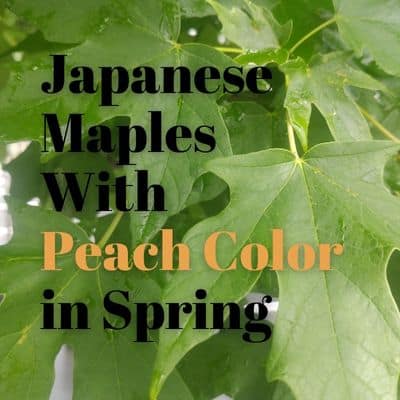
ACER CIRCINATUM ‘SUNNY SISTER’ 6-8 6-7 peach lt green yellow/ orange Amoenum upright ACER ELEGANTULUM X PALMATUM ‘JOHNNIE’S GIANT’ 6-9 FAST 15 Peach dk green yellow/ orange Matsumurae upright ACER
-
What Japanese Maples Are Orange In The Fall?
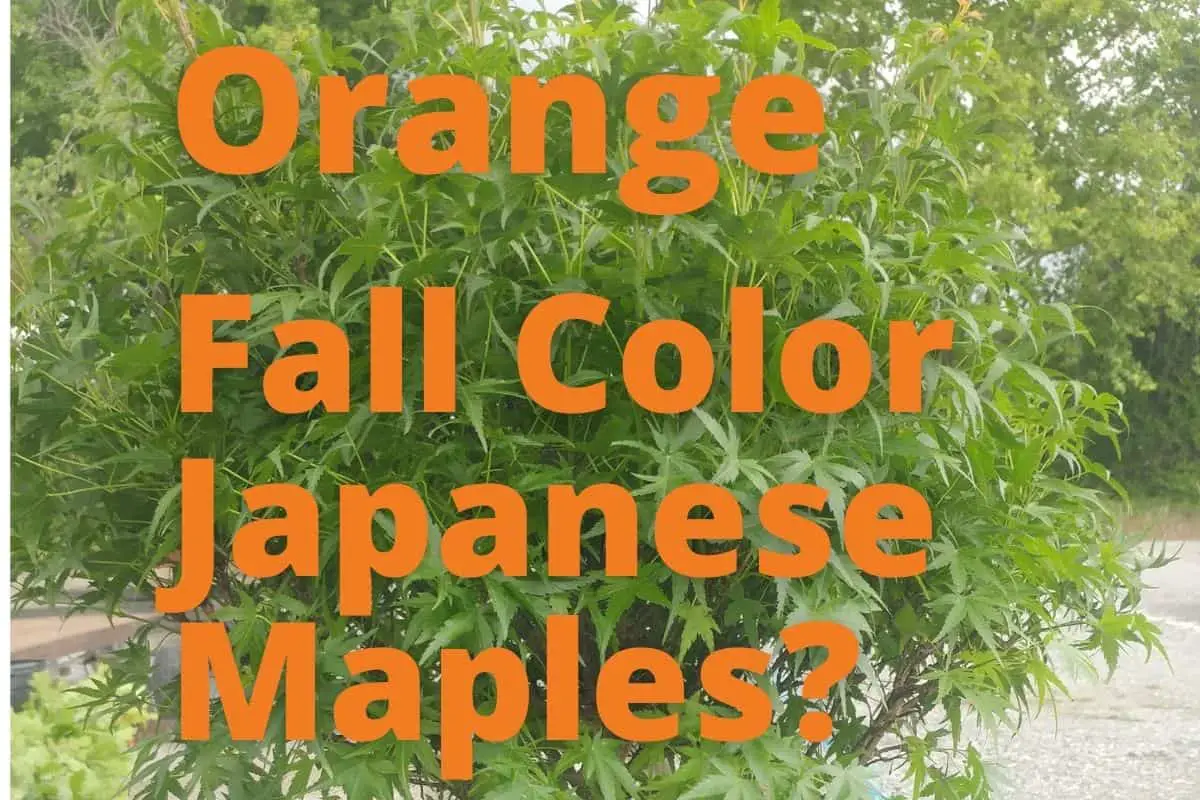
Latin name zones height 10-15 yrs spring color summer color fall color leaf type tree shape ACER JAPONICUM ‘EMMETT’S PUMPKIN’ FULL MOON 5-9 12-15 org/over green dark green orange Palmatum
-
Magnolia ‘Coppertallica’ Exciting New Variety In My Garden

Magnolia ‘Coppertallica’ has a true metallic sheen that glimmers when it catches the sun on the undersides of the leaves. I did not believe it until I saw it myself.
-
Dog Shock Collars – Effective? Humane? Would I Use Again? – My Personal Experience

I had never used or even considered using a dog training collar (commonly referred to as a“shock” collar) because I have always been able to use my experience and positive
-
Gorilla Dump Carts; Sizes Compared & Pro Tips
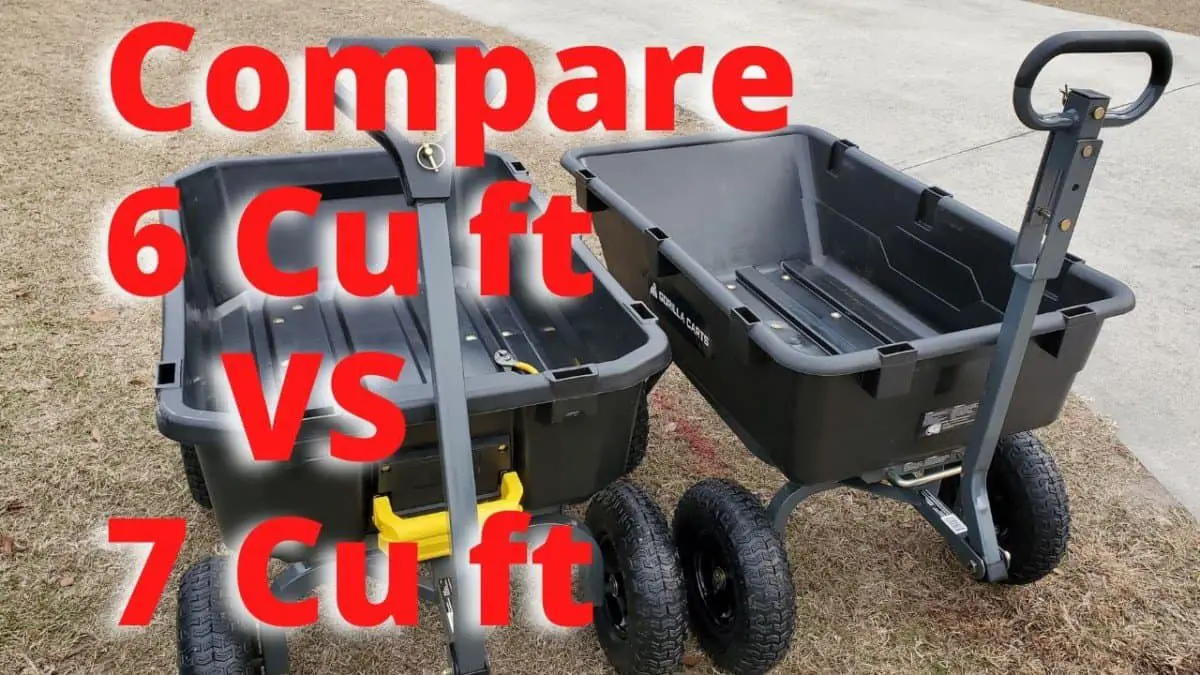
I first started looking for a new wheelbarrow to use in my garden and landscape. It is what I have always used. It is what I am used to. I





